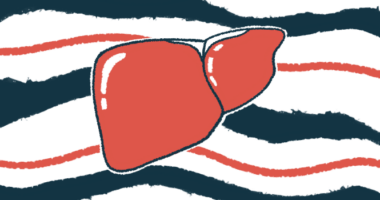Poor access to genetic testing may delay Alagille syndrome diagnosis
Study underscores risks from misdiagnoses, unwarranted surgeries

Difficulty accessing genetic testing in low- to middle-income countries may delay the diagnosis of Alagille syndrome in children and lead to misdiagnoses that may result in unwarranted surgeries, a study in South Africa shows.
Physicians in these countries must instead rely on diagnostic clinical criteria, including a reduced number of bile ducts on a liver biopsy, characteristic facial features, heart, bone, and/or eye abnormalities, to make an Alagille diagnosis in suspected cases.
The study, “Presentation and outcome of Alagille syndrome in paediatric patients at State Academic Hospital in South Africa,” was published in the Sudanese Journal of Paediatrics.
Alagille syndrome is a rare genetic disease wherein abnormalities in embryonic development result in a low number of bile ducts. This leads to cholestasis, or impaired flow of the digestive fluid bile from the liver to the intestines, which causes bile to accumulate in the liver and leak into the bloodstream, leading to liver damage and symptoms such as itching and jaundice, or yellowing of the skin and whites of the eyes. The disease may also cause heart defects, abnormalities in the face and eyes, and issues with vertebral bones, blood vessels, and kidneys.
The disease is most commonly caused by mutations in the JAG1 or NOTCH2 genes. An Alagille diagnosis is usually confirmed with at least three of five to seven major signs and symptoms, but fewer clinical signs are required when there’s a positive genetic test or family history of the disease.
“In a resource-poor setting, with limited access to genetic studies, [Alagille syndrome] may be misdiagnosed as … biliary atresia,” another infantile condition marked by cholestasis where the bile ducts are blocked or absent, the researchers wrote.
Little data on Alagille syndrome
South Africa has one of the highest frequencies of biliary atresia in the world, and “there is little published data on [Alagille syndrome] in Africa,” wrote a team of researchers there who retrospectively analyzed the medical records of 25 children (13 girls, 12 boys) diagnosed with Alagille at the region’s biggest and oldest specialized liver clinic between 1992 and 2020. Most were Black (92%) and developed symptoms before they turned a year old (72%).
All the children had fewer bile ducts on a liver biopsy. The most common manifestation was cholestasis (96%), followed by disease-typical facial features (80%), heart defects (64%), bone issues (40%), eye problems (36%), and kidney disease (32%). Less common manifestations included brain blood vessel complications in two children and hearing loss in one.
In a resource-poor setting, with limited access to genetic studies, [Alagille syndrome] may be misdiagnosed as … biliary atresia
Regarding liver-related complications, 84% of the children presented itching, 60% developed high blood pressure in the portal vein that runs through the liver, and 32% had xanthomas, which are fatty deposits under the skin that appear waxy and yellowish.
In terms of liver damage markers, all the children had elevated alkaline phosphatase (ALP) levels and most had high levels of conjugated bilirubin (92%) and gamma-glutamyl transferase (GGT; 84%).
About three-quarters of the 17 children with available data had high cholesterol, a fatty molecule that’s often increased in Alagille patients due to problems in liver function.
Treating, mistreating Alagille syndrome
Regarding Alagille treatment, two children (8%) underwent biliary diversion, a surgical procedure that involves redirecting the flow of bile to reduce cholestasis, liver damage, and the need for a liver transplant. Three children (12%) had a Kasai procedure in early infancy due to a misdiagnosis of biliary atresia. While the procedure is beneficial for biliary atresia, it’s associated with poor outcomes in children with Alagille. Two of these children later required a liver transplant.
Paying attention to the diagnostic criteria for [Alagille syndrome] may prevent patients from undergoing unwarranted surgery
The misdiagnoses may have been due to the possible presence of certain biliary atresia features on liver biopsies done early in the disease course, the researchers said. “Paying attention to the diagnostic criteria for [Alagille syndrome] may prevent patients from undergoing unwarranted surgery,” they wrote.
About half of the children were lost to follow up and four (16%) died.
“To the best of our knowledge, this is the first study describing the clinical presentation and complications of [Alagille syndrome] in Africa,” wrote the researchers, who said their study was limited by its small sample size, its retrospective nature, and the number of children lost to follow-up.
“Countries with low income and no access to genetic studies need to have diagnostic guidelines for cholestatic infants with high ALP and GGT,” the researchers wrote. “This includes examination for characteristic facial anomalies … comprehensive [heart] and [eye] evaluations, and vertebral X-rays.”







